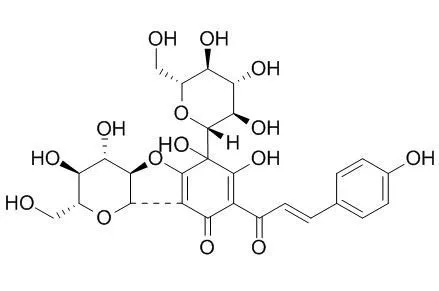To investigate the effects of Safflor Yellow A (SYA), a flavonoid extracted from Carthamus tinctorius L, on cultured rat cardiomyocytes exposed to anoxia/reoxygenation (A/R).
METHODS AND RESULTS:
Primary cultured neonatal rat cardiomyocytes were exposed to anoxia for 3 h followed by reoxygenation for 6 h. The cell viability was measured using MTT assay. The releases of lactate dehydrogenase (LDH) and creatine kinase (CK), level of malondialdehyde (MDA), and activities of glutathione (GSH), superoxide dismutase (SOD), catalase (CAT) and glutathione peroxidase (GSH-Px) were analyzed. Hoechst 33258 staining and changes in Bcl-2/Bax ratio and caspase 3 activity were used to examine A/R-induced apoptosis. The A/R exposure markedly decreased the viability of cardiomyocytes, suppressed the activities of SOD, GSH, CAT and GSH-Px, and Bcl-2 protein expression. Meanwhile, the A/R exposure markedly increased the release of LDH and CK, and MDA production in the cardiomyocytes, and increased the rate of apoptosis, caspase 3 activity, Bax protein expression. Pretreatment with Safflor Yellow A (40, 60 and 80 nmol/L) concentration-dependently blocked the A/R-induced changes in the cardiomyocytes. Pretreatment of the cardiomyocytes with the antioxidant N-acetylcysteine (NAC, 200 μmol/L) produced protective effects that were comparable to those caused by Safflor Yellow A (80 nmol/L).
CONCLUSIONS:
Safflor Yellow A protects cultured rat cardiomyocytes against A/R injury, maybe via inhibiting cellular oxidative stress and apoptosis. |






 Cell. 2018 Jan 11;172(1-2):249-261.e12. doi: 10.1016/j.cell.2017.12.019.IF=36.216(2019)
Cell. 2018 Jan 11;172(1-2):249-261.e12. doi: 10.1016/j.cell.2017.12.019.IF=36.216(2019) Cell Metab. 2020 Mar 3;31(3):534-548.e5. doi: 10.1016/j.cmet.2020.01.002.IF=22.415(2019)
Cell Metab. 2020 Mar 3;31(3):534-548.e5. doi: 10.1016/j.cmet.2020.01.002.IF=22.415(2019) Mol Cell. 2017 Nov 16;68(4):673-685.e6. doi: 10.1016/j.molcel.2017.10.022.IF=14.548(2019)
Mol Cell. 2017 Nov 16;68(4):673-685.e6. doi: 10.1016/j.molcel.2017.10.022.IF=14.548(2019)